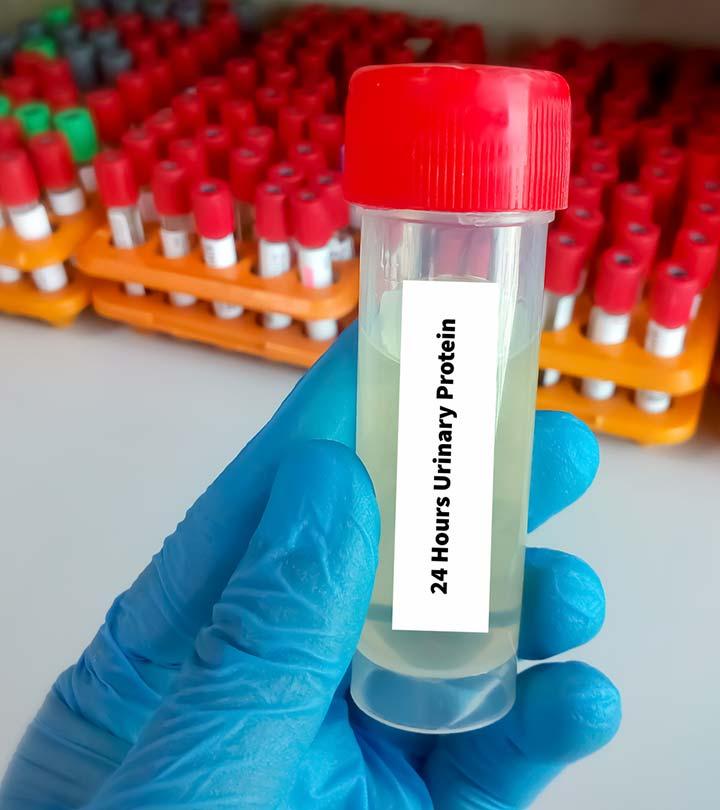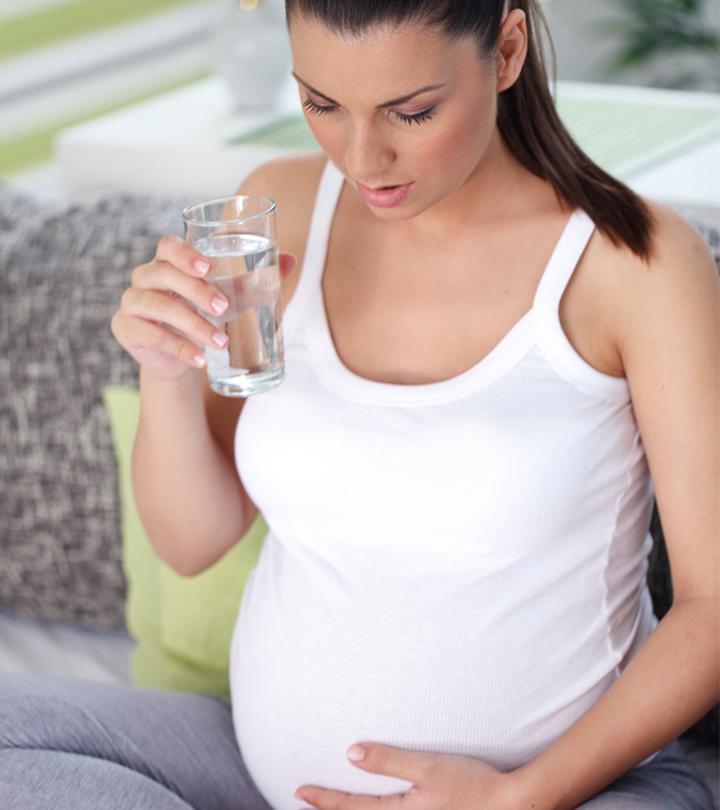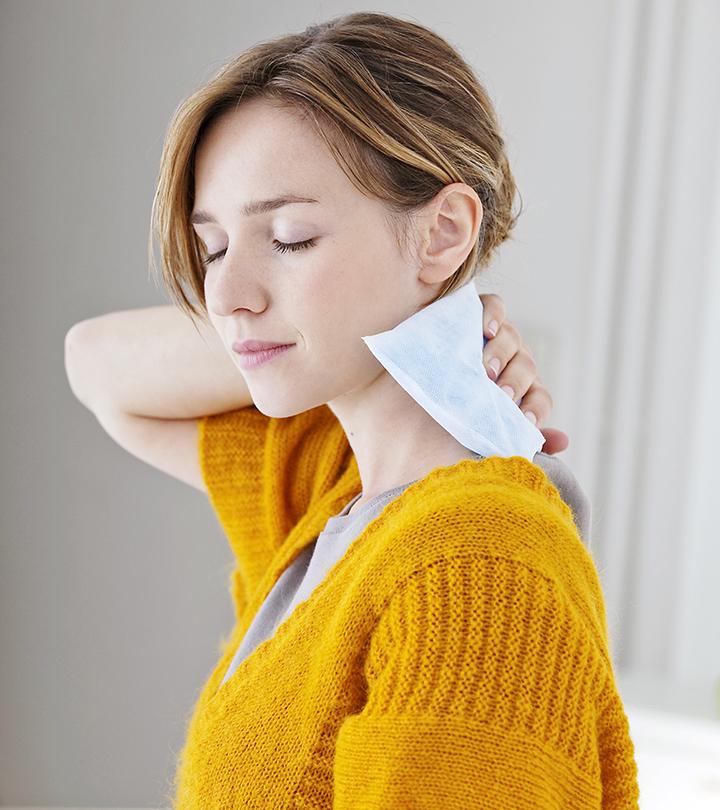
A baby’s towels, napkins, and clothes contain germs like any other surface. Therefore, parents may ponder how to wash baby clothes properly to ensure they remain germ-free. Baby’s clothes may pick up germs from anywhere in the surrounding area as they crawl on the floor and are picked up by many people. Sometimes, the clothes may not contain germs but acquire them from other clothes they are being washed with (1). Therefore, parents need to follow proper washing instructions and tips to keep their babies’ clothes free from infections. This post brings you a detailed explanation of how to prepare your babies’ clothes for washing, things to take care of, and the best ways to maintain your little one’s dresses.
How To Prepare For Washing Baby’s Clothes?
It is important to keep some key points in mind before you dunk baby’s clothes in a washing bucket or washing machine.
1. Check the label for washing instructions:
Image: IStock
If the clothes have a label, they will likely have a set of wash care instructions such as water temperature, hand/machine wash, and more. In addition, manufacturers of baby and newborn clothes often include the correct, baby-safe steps of washing the garment, which helps determine the wash care process.
2. Choose the right detergent:
Many parents wash all their baby’s clothes, including cotton garments, woolen clothing, or clothes made of synthetic fibers, with regular detergent.
The American Academy of Pediatrics says that as long as the baby has no allergies, there is nothing wrong with using a regular detergent (2). Also, a baby detergent usually does not have proper stain-removal properties (3). You can select a regular detergent with no added colors, intense fragrance, or conditioning chemicals.
You may also choose bleach-free or fragrance-free detergents specially formulated to wash baby clothes without leaving any possible allergenic residues.
 Quick tip
Quick tipUsing safe ingredients, you can also create a gentle detergent for your baby’s sensitive skin. A mother shares her detergent recipe, which had proven safe for her baby’s delicate skin, “To make the detergent, you will need two cups of finely grated soap, one cup borax, one cup washing soda, and ¼ cup baking soda. Add all the ingredients in the food processor to mix and make it finer. Afterward, place it in a large airtight container and use the detergent (two tbsp to ¼ cup) depending on the laundry size and dirt (i).
3. Separate the baby clothes:
Image: Shutterstock
Many parents toss their baby’s clothes with other household garments to wash them together. But that should not be the case. Instead, you should wash infant clothing separately to prevent dirt from other clothes from settling on them, thus mitigating the chances of allergy.
Do I Have To Wash Baby Clothes Before First Use?
As you may be unaware of the conditions in which the clothes were stored, experts recommend that you wash baby clothes before first use. If you have purchased the clothes before the baby is born, then keep them washed and ready before your little one arrives.
 Did you know?
Did you know?Now, let us see the various steps involved in the washing process.
How To Hand-Wash Your Baby Clothes?
You may hand-wash your baby clothes as the instructions on the label tell you to do so or simply because you prefer washing clothes that way. This is how you can hand-wash:
1. Select the water temperature:
Image: Shutterstock
Fill a tub or washing bucket with the desired level of water. Select the water temperature as recommended on the cloth label. If there are no instructions, you can wash in cold or lukewarm water, with a temperature of around 35-40ºC. Warm water is ideal for washing cloth diapers and baby’s undergarments as it helps remove any foul odor and infection. However, cold/room temperature water should suffice for regular and wool baby clothes.
2. Add the appropriate detergent:
Add the recommended quantity of detergent or as desired and whip the soapy water to make frothy. Close any zippers, submerge each cloth one at a time and gently swish and rub the clothes, particularly on the areas that have stains. Do not stretch the fabric since you may damage it. Instead, twist them gently so that each part of the cloth gets cleaned.
3. Soak the clothes for better cleaning:
Soak the clothes for a couple of minutes and then remove them from the soapy water. Clean them and then rinse in a bucket until there is clean water. Repeat the rinsing process until there is no foam left on the clothes.
4. Dry the clothes:
Very gently, wring the clothes to squeeze the water out. Drip-dry the clothes using a line drying or a cloth stand, placing them somewhere with good air circulation but no direct sunlight, as it may damage the clothes. You can dry the baby’s cloth diapers or undergarments under direct sunlight as it is a natural disinfectant.
Hand-washing the clothes ensures that you clean every part of the fabric. But if you would like to save time, then you can wash the clothes in a washing machine.
How To Machine-Wash Baby Clothes?
You can machine-wash baby clothes the way you wash other clothes. Here’s how you do it:
1. Get rid of visible stains:
Look for any stubborn stains on the cloth that you can treat with detergent before putting it in the machine. Use a paste of detergent and water to scrub the stained spot gently and then proceed to the next step.
2. Select water level and add detergent:
Put the clothes in the machine and select the desired water level. You can use lukewarm or cold water, and add the same detergent that you used during hand-washing the clothes. Do not add any bleach or fabric enhancers.
3. Choose a wash mode:
Image: Shutterstock
Select the wash mode and let the machine do the rest. You can select the ‘Gentle or Delicate’ cycle mode for a gentle wash. Washing machines have a ‘spin’ cycle that centrifuges the water out of the damp clothes. For baby clothes, you can select an additional spin to be extra sure that the clothes are free of any residual detergent. Once done, you can dry the clothes the way you did for hand-washed clothes.
Remember, that bedsheets and napkins of your baby can be washed the same way as his clothes.
 Quick tip
Quick tipCan I Use Fabric Softeners And Dryer Sheets?
Fabric softeners are liquids that are added during the washing process to soften the cloth material.
Dryer sheets are tissue paper-sized sheets that are placed with the clothes in an electric dryer to prevent the buildup of static electricity and soften clothes as well.
Both fabric softeners and dryer sheets use chemicals, which can irritate the skin while their fragrance could be unfavorable for the baby. Medical experts are not in favor of fabric softeners and dryer sheets as the baby’s skin is prone to irritation and allergies (4).
According to a market study, the demand for baby cleaning products in the US is expected to increase due to the rising awareness among consumers about infant hygiene and innovations in baby cleaning products. The graphical illustration below shows that the baby cleaning supplies market was valued at USD 3.16 billion in 2017 and is anticipated to experience a compound annual growth rate (CAGR) of 5.3% during the forecasted period.
US Baby cleaning products market size, by product (2018-2026)
Source: Baby Cleaning Products Market Analysis Report By ProductHow To Disinfect Baby Clothes?
Baby clothes can be disinfected using an over-the-counter baby-safe disinfectant or with vinegar. Hot water and sunlight also remove germs from baby’s clothes. You may wish to disinfect all the garments, but cloth diapers and baby’s undergarments are the ones that require disinfection. Here are the ways you can keep your baby’s clothes germ-free:
- Prewash disinfection: Try removing as many stains as possible from the dry clothes by scraping them. Add some teaspoons of regular edible vinegar to a bucket of water and soak the cloth for 30-45 minutes. Vinegar acts as a natural disinfectant removing bacteria from the stains. After soaking, wash the clothes the usual way – by hand or in a machine. Washing will get rid of the vinegar while also removing any residual smell. You can also use a disinfectant liquid diluted in water.
- Post-wash disinfection: Add a regular disinfectant liquid to a bucket of water, and soak the washed clothes for a few minutes or as instructed on the bottle of the disinfectant. Rinse the garment with clean water before putting it out to dry. Use a disinfectant that is safe for babies and does not leave any intense smell. Do not use vinegar for post-wash disinfection since rinsing in water alone will not remove its odor.
- Using hot water and sunlight: Disinfecting clothes with hot water is safe and straightforward. Soak the clothes in hot water for ten to 15 minutes before you wash them the usual way. You can also dry the clothes in direct sunlight and leave them there for some extra time for disinfection.
What If The Baby Has Skin Allergy?
If your baby has a skin allergy or suffers from eczemaiNon-contagious skin condition characterized by dry, itchy, and inflamed skin or dermatitisiSkin irritation or inflammation that may lead to patches of dry, red, itchy, flaky, blistered skin , then you must be careful about the wash care. Here are some points to know in such situations:
- Use exclusive baby detergent: Use only baby detergents to wash clothes. Choose a baby detergent variant that is formulated for extra sensitive skin or specially made for infants with skin conditions.
- Use liquid detergents if the allergy is mild: If the allergy or skin condition is mild, then use a regular liquid detergent because it rinses more easily than powder-based ones. There is a less chance to find detergent residue on clothes, preventing skin irritation.
- Use only hot water and sunlight for disinfection: Hot water and sunlight are the best cloth disinfectants for babies with sensitive skin since they are natural and chemical-free.
Frequently Asked Questions
1. Can you wash baby clothes with regular clothes?
It is advisable to wash baby clothes separately, but many parents have reported no harm in washing baby clothes with regular laundry. However, it is wiser to use a baby-safe detergent in this case (separate washing of baby clothes with hypoallergeniciSubstances that are highly unlikely to cause an allergic reaction detergent is a must if your baby shows any signs of allergy) (2).
2. How often do you wash baby clothes?
New clothes should be washed before your baby wears them. You may either wash your baby’s clothes every day or handle the entire pile once a week.
3. Do baby clothes go in the dryer?
Most baby clothes go well in the dryer. However, keep the heat low as it might damage the elasticity of the baby’s clothes. Also, baby clothes do not need ironing.
4. What will happen if I don’t wash my baby’s clothes?
Your baby’s skin is sensitive and vulnerable to dirt and chemical exposures. Therefore, not washing their clothes may negatively affect their health, leading to skin irritation, allergies, or infections.
Knowing how to wash baby clothes is important to keep them clean and germ-free. You may wash these clothes by hand or in the washing machine. Ensure you check the labels of the clothes for washing instructions, choose the right detergent for the baby’s clothes, and dry them in a place with good air circulation. Also, you should wash your baby’s clothes separately so that they are not affected by dirt from other people’s clothes. Since babies have sensitive skin, fabric softeners or dryer sheets are not recommended. If you want to disinfect your baby’s clothes, use a disinfectant made for babies or dry them in the sunlight.
Infographic: Laundry Safety: Tips For Parents
As your newborn arrives, you could be spending considerable time doing laundry. Knowing the measures to take while doing your baby’s laundry is important to keep the baby safe. Take a screenshot of this infographic or print and paste it on your washer or laundry equipment so that you may follow a safe laundry routine for your baby’s clothes. Illustration: Momjunction Design Team
Key Pointers
- Verify washing instructions and choose appropriate detergent for baby’s clothes.
- Wash baby’s clothes separately to avoid contamination.
- If hand-washing, soak clothes in proper detergent, wring before drying.
- Avoid using fabric softeners or conditioners that contain chemicals.
- Disinfect baby’s clothes safely with vinegar and dry them in sunlight for proper disinfection.
Image: Dall·E/MomJunction Design Team
Learn how to hand-wash newborn baby clothing. Follow our simple guidelines to ensure a gentle and secure washing process for your baby’s clothes.
Personal Experience: Source
MomJunction articles include first-hand experiences to provide you with better insights through real-life narratives. Here are the sources of personal accounts referenced in this article.
i. Baby and sensitive skin laundry detergent/soap.https://www.hibiscushouseblog.com/2016/04/baby-and-sensitive-skin-laundry.html
References
- Can clothes and towels spread germs?
https://www.nhs.uk/common-health-questions/infections/can-clothes-and-towels-spread-germs/ - Laundering Your Baby’s Clothes.
https://www.healthychildren.org/English/ages-stages/baby/diapers-clothing/Pages/Cleaning-Baby-Clothes.aspx - Laundering Your Baby’s Clothes.
https://kidshealth.org/en/parents/laundry.html - Baby Laundry
https://hhma.org/healthadvisor/pa-laundry-pep/ - Non-Toxic Laundry Tips For Baby.
https://womensvoices.org/avoid-toxic-chemicals/pregnancy/non-toxic-baby-tips/laundry-room/
Read full bio of Dr. Umera Zakiahmed Saiyed
Read full bio of Dr. Ritika Shah
Read full bio of Anindita Ghatak


























